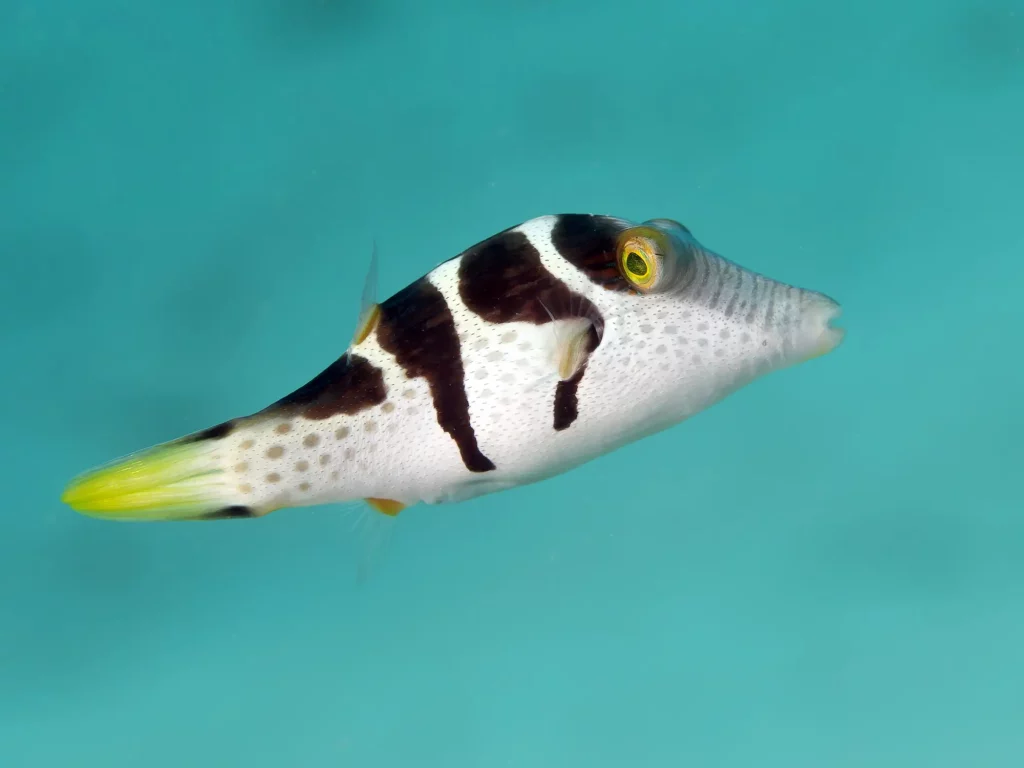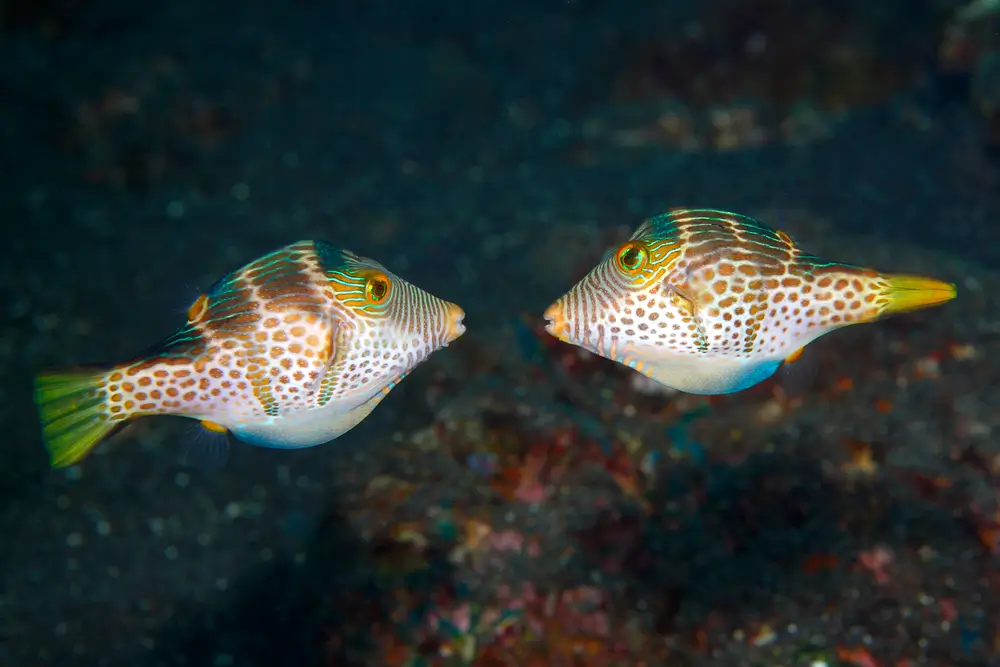If you’ve ever considered having your own reef aquarium, it’s quite likely that you would be concerned about which fish to put in it. The problem would be compounded by the fact that the corals have to be maintained carefully with proper lighting, water flow, and temperature requirements. One of the most common challenges faced by reef enthusiasts is how to find suitable fish to cohabit with the coral environment, particularly when it comes to reef safe puffer fish.
Pufferfish are popular additions to aquariums. They are known for their ravenous appetites and quirky behaviors. But they tend to nip at corals, which poses a threat to reef ecosystems. This guide will look at reef safe puffer fish. It will explore their compatibility with corals and give insights into creating harmonious reef tank environments.

Are There Reef-Safe Puffer Fish?
When talking about the compatibility of puffer fish with reef tanks, we need to understand what is meant by the term ‘reef safe’. When it comes to aquarium keeping, reef safe typically refers to fish species that are unlikely to harm corals or other invertebrates present in the tank.
Many pufferfish species are not considered reef-safe due to their coral-nipping tendencies. However, some are known to coexist peacefully with corals. Dwarf puffers (Carinotetraodon travancoricus) and Toby puffers (Canthigaster spp.) are two examples of puffer fish species that are generally more compatible with reef environments.
Dwarf puffers are also called pea puffers. They are small freshwater puffer fish native to South Asia. Despite their small size, these puffers are full of personality and can thrive in reef tanks with proper care.
Toby puffers are saltwater species found in tropical oceans across the world. These puffers are famous for their striking colors and relatively peaceful manner. This makes them suitable additions to reef aquariums.
What Small Puffer Fish Can Live in a Reef Tank?
For reef enthusiasts looking to add reef safe puffer fish to their tank, selecting a small species is the key to minimizing the risk of coral damage. Small puffer fish are less likely to cause significant harm to corals compared to their larger counterparts.
Here are a few small puffer fish species that can thrive in reef tanks:
1. Blue Spotted Puffer (Canthigaster solandri):
This fish is identifiable by its striking blue spots and yellow body. The blue-spotted puffer can add a splash of color to reef tanks. These puffers are relatively small and typically peaceful towards corals when adequately fed. It is native to Indonesia.
2. Figure Eight Puffer (Tetraodon biocellatus):
This fish is native to freshwater habitats in Southeast Asia. The figure eight puffer is a small, brackish water species that can adapt well to reef aquariums with low salinity levels. Their name is derived from the markings on the back of the fish that resemble the figure 8.
3. Valentini Puffer (Canthigaster valentini):
This fish is so named because of its heart-shaped markings. The Valentini puffer is a pleasant addition to reef aquariums. They are known to nip at corals occasionally. However, their small size minimizes the damage they can cause. They have dark brown vertical markings on the back that look like a saddle.

4. South American Puffer Fish (Colomesus asellus):
These Amazon fish are native to Brazil. They love to travel in schools, are social, and can tolerate other fish. They are better off in acid water with a warm temperature that is not salty. They are naturally nervous and can be frightened easily.
Creating a tank environment that supports both small puffer fish and coral health requires careful planning. Providing ample hiding places, maintaining stable water parameters, and offering a varied diet are essential for keeping puffers content in a reef setting.
Can I Keep Corals with Puffers?
One of the primary concerns when keeping puffer fish in reef tanks is their potential to damage corals. Pufferfish have sharp beaks designed for cracking open hard-shelled prey, which can inadvertently lead to coral damage if not properly managed.
When selecting corals for a reef tank with puffer fish, it’s essential to choose species that are less likely to be targeted by these curious fish. Soft corals, such as mushrooms, zoanthids, and leather corals, are generally more resilient to puffer nipping compared to stony corals like Acropora and Montipora.
Additionally, monitoring puffer behavior closely and providing distractions, such as live rock or artificial structures, can help redirect their attention away from corals. Some aquarium owners also employ feeding strategies, such as offering meaty foods or shellfish, to satisfy the puffers’ natural foraging instincts and reduce their interest in corals.
Are Puffer Fish in Coral Reefs?
To better understand the compatibility of puffer fish with reef environments, it’s essential to examine their natural habitat and behaviors in the wild. Pufferfish are commonly found in coral reefs worldwide, where they play crucial roles in maintaining ecosystem balance.
In their natural habitat, puffer fish exhibit a diverse range of behaviors, from grazing on algae to hunting small crustaceans and mollusks. While some species may occasionally nip at corals to access their prey, they generally coexist peacefully with reef organisms.
By studying puffer fish behavior in coral reefs, aquarium owners can get valuable knowledge about how these fish interact with their surroundings. They can adapt their tank setups accordingly. Mimicking natural reef conditions, providing suitable food sources, and offering ample enrichment can help minimize stress and encourage natural behaviors in captive puffer fish.
Conclusion
Incorporating puffer fish into reef tanks can be a rewarding experience for aquarium owners, but it requires careful consideration and planning. By selecting small, reef-safe puffer species and choosing compatible corals, aquarium owners can create harmonious reef ecosystems that bring out the beauty of both fish and invertebrates.
Responsible fishkeeping is important to maintain reef aquariums, and aquarium owners must look after the well-being of both their fish and corals. Through diligent observation, thoughtful planning, and ongoing education, reef enthusiasts can enjoy successful puffer fish-reef tank setups for years to come.
